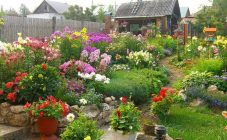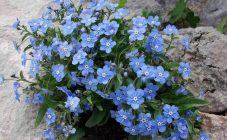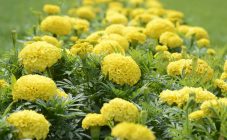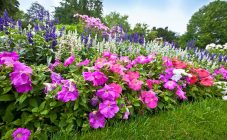Content:
Many adjoining territories have sparse vegetation. Practically nothing grows under the crowns of tall trees, along the garden fences, near the building itself due to strong shading. Perennial shade-tolerant flowers can solve the problem of poorly lightened areas of the garden.
Perennial species
Perennials are of several types. Those who love landing sites with good sunlight throughout the day. In places with a lack of sunlight, they are very stretched, striving to be closer to the sun and do not bloom.
There are perennials that are not afraid of a little shading, but still prefer areas with a sufficient amount of sunshine. Nothing prevents shade-tolerant flowers from blooming in such areas, only their color will not be so intense.
Plants that prefer shaded areas in the open sun can burn the stem, shed flowers and wither. It is with such flowers that shady garden plots are planted.
Snowdrops
The first in the garden, as soon as the snow cover melts, the snowdrops and woods bloom. Forest dwellers do not interfere with the shadow cast by the branches of trees, they are content with the weak rays of the sun, which is just beginning to warm up.
There is a legend that God turned into snowdrops the tears of the first woman on earth, Eve, who mourned the terrestrial vegetation suffered from severe frosts and snow. The snowdrop gives a sign that spring has come, teaches us to enjoy life.
Lily of the valley
Following the primroses is the lily of the valley with its delicate white bells of flowers. He prefers moist, shaded areas with loose soil. Lily of the valley personifies spring, which has entered into its legal rights, seeks to wake up all plants from a deep winter sleep.
Narcissus
It belongs to early perennials and daffodil. Among gardeners, 20 of its species are popular, although there are at least 60 subspecies in the nature of a flower. Narcissus is not whimsical to sunlight, loves shaded areas with light soil that allows water to pass through well.
Brunner
In shady, waterlogged places, Brunner feels good. It blooms continuously from May and all summer. Its pale blue flowers look good in multi-tiered plantings, they create borders from them.
Tenacious
For the design of slopes and slopes, a tenacious flower is ideal. No wonder the plant is called a rainbow, it is able to cover large garden plots with a living green carpet with leaves of burgundy and chocolate shades in a short time. Blooms bluish purple.
Fox
The foxglove is not afraid of shaded places, it is not whimsical to the composition of the soil. She loves permeable soil, but does not tolerate stagnant moisture, easily tolerates frost and drought, and is not demanding in maintenance. Foxglove begins to bloom in June and blooms until autumn.
Hosta
The hosta plant grows weaker in a shaded place than in a lighted one, but the shade has a beneficial effect on the growth of the stem and the size of its leaves. Over the years, it only gains strength, becomes more beautiful. Hosta is often used by gardeners in landscaping. It blooms in August.
Primroses
They do not like the heat of primroses, preferring shades to the sun. Their bright yellow and white flowers delight the eye from May until the onset of frost.Every 3 years, primrose needs to be updated for lush flowering.
Spring perennials
The shade-loving spring flowers also include small-bulbous muscari with bright blue inflorescences, a herb from the lily family erythronium with yellow, white or pale pink flowers, tender Pushkinia, named after the Russian mineralogist Musin-Pushkin, a lovely dicentra, shaped like a heart, copse of the buttercup family.
There are many more varieties of shade-loving flowering plants that love secluded corners of the garden, where the sun's rays do not reach. They feel great in such areas, delight gardeners with their flowering and rich green leaves.












